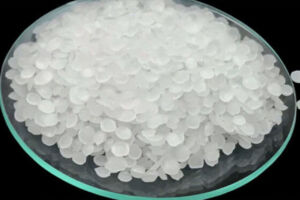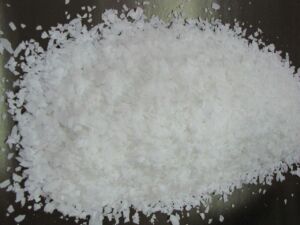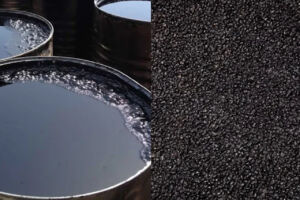Insulators are materials that are made to prevent heat and sound transfer from one part to another. Naturally, the purpose of insulation is to prevent the transfer of heat or sound inside or outside the house or to limit them to a certain part of your house. Insulation can work in a number of ways, but the most common include a combination of materials that contain millions of tiny air pockets. Air is still considered an effective and useful insulator, and it is these air pockets (trapped air) that give most insulation high thermal resistance.
Thermal insulation for temperature control
Thermal insulation is one of the subjects that almost everyone has heard and people are familiar with. Thermal insulation is usually used in walls and ceilings; Especially the outer walls of houses where the most heat is received or lost in these areas. The idea behind thermal insulation to retain heat on one side is very simple. If you live in a place where the temperature changes in different seasons of the year are quite noticeable, the insulation design must be done completely and based on the correct principles. If you live in a place that is always cold or hot, the insulation you get should be designed for such a climate.
Acoustic insulation for sound control
In addition to controlling heat (heat and cold), insulators can also be used to control sound, and even some insulators can control both temperature and sound. Sound insulation is usually used in the walls, ceiling or floor; But sound insulation is sometimes used for special applications (such as home theaters).
Also, if in your living area, external sounds such as busy roads, airports, train lines or industrial machinery create noise, you can use the benefits of specialized sound insulation. Proper use of sound insulation of windows, ceiling and walls can make a huge difference in the peace of your home.
Is it possible to use an insulator thermally and acoustically?
Although thermal insulators also moderate the sound transmission to some extent (and vice versa), most insulators are used in one of the acoustic and thermal cases. The people who have this question in their mind, actually mean that by doing thermal insulation, their environment will also be soundproofed. The answer to this question is that it depends on various factors.
For example, we have to see how much the sounds and noises that need to be controlled are, and it also depends on the way the houses are built. In most houses where there are low sounds with a low level, it is possible to do sound insulation by just placing thermal insulation, so that you will no longer need sound insulation. The sound insulation that is used inside the walls has a very good performance to control the sounds between the bedroom and the living room of the house.
Types of insulation materials
The first type of insulation that you think of is a type of pad made of fiberglass or rock wool. These pads are made of lightweight panels with a fluff-like texture that are usually placed in the gaps between the walls or ceiling of your home. These pads are usually made of fibrous materials and function through air pockets trapped between the fibers.
Some types of insulation include insulation made from cellulose (which is easier to install in manufactured homes), insulation made from polyurethane foam, and insulation made from polyester and reflective foil. Each of these types of insulation has a different function to preserve and prevent heat and cold, and the use of each has advantages and disadvantages.
It is possible to use fibers or materials with higher density to make soundproofing. Most of these materials are polymers such as rubber or glue. However, in residential applications, it is possible to use the combination of dense structures inside the house wall and insulation at the same time and achieve better sound insulation.
In order to understand the concept and application of good insulation, it is better to first explain what exactly insulation is. There are different types of insulation, thermal insulation, sound insulation, electrical insulation, etc. The topic that we will discuss in this article is thermal insulation. The way this insulation works is that it works by reflecting heat radiation or reducing and transferring heat from one object to another. For example, a mug containing hot tea that you hold and does not burn your hands or gloves that protect your hands from the cold are simple examples of insulation.
The stainless steel bottle is a very good example of this because many people don’t know that it is not the bottle that does the insulation, but the vacuum space between the body of the bottle! In fact, the stainless steel bottle consists of two bottles, one of which is placed on top of the other with a small distance. This empty space actually creates a vacuum and acts like an insulator.
Air is considered a good insulator and plays the main role in insulating properties, but vacuum is one of the best insulators; For example, in cooking gloves and glass wool insulation. In general, the air bags in these materials are more effective in slowing down the heat transfer than the materials themselves. For example, NASA has used airbags to prevent space shuttles from catching fire when they enter the Earth’s atmosphere from space.
Among the types of sound and thermal insulation, we can refer to the following:
ROCKWOOL
Stone wool is a type of sound-heat insulation with mineral fibers. The primary material of rock wool insulation is basalt, which is a group of igneous rocks and remnants of volcanic activities. In order to produce stone wool, basalt is melted at a temperature of 1500 degrees Celsius and using special methods it is converted into fine fibers with a thickness of microns. 97% of the stone wool product is basalt, and the remaining 3% is the ingredients, resin and oils needed to shape the fibers according to the type of product required.
The temperature tolerance range of stone wool is from -30 to 750 degrees Celsius, and its heat transfer coefficient is very small, which is why it plays a very important role in minimizing the energy consumption of buildings, especially buildings with LSF structures. The largest share of energy consumption in advanced countries is related to industrial sectors, but in Iran, the highest amount of energy consumption is considered in homes and administrative sectors. This issue not only causes the waste of a large part of the country’s national capital, but also causes a lot of pollution in the environment, and the effects of these pollutions appear in the form of environmental waste or a decrease in the level of public health. Reducing energy consumption, in addition to reducing costs, also reduces pollutants, and this helps to protect the environment.
In addition, stone wool is considered as a favorable insulation from the environmental and health point of view and does not have any of the adverse effects of similar insulations, in fact, stone wool is the least harmful thermal-acoustic insulation produced. In addition to being an excellent heat insulator, rock wool is also a good sound insulator. The insulation power of stone wool is 33 times that of a concrete wall and 22 times that of a brick wall. This issue has caused that in modern constructions or LSF structures, where these insulations are necessarily used between the walls, rock wool has become the most widely used insulation in LSF structures. Rock wool insulation is placed in the construction industry, especially in buildings with LSF structures, refinery and petrochemical industries, furnaces, chimneys, ovens, air channels, steam boilers, and also used for sound insulation.
Elastomer insulation
Elastomer insulation is currently used in the facilities industry to insulate air conditioning ducts and heating and cooling systems such as hot and cold pipes, tanks of various materials, parts and connections, air ducts and in industries such as building structures. , industrial, oil, gas and petrochemical due to environmental and sanitary reasons, high efficiency and further prevention of energy reduction, ease of installation and reduction of installation time has become an inevitable and common issue.
Simple elastomeric insulation is more expensive compared to other insulations such as glass wool and stone wool. But due to not needing separate double coatings, high useful life, excellent efficiency, fast and low-cost installation and the ability to be used several times, it is actually very affordable. Also, this type of insulation is resistant to the release of water vapor. To the extent that the moisture absorption of these insulations in a period of one month is finally 10% of their total weight, which is 10,000 times less compared to traditional insulations such as glass wool and stone wool. Elastomeric insulation does not catch fire in the event of a fire and does not release toxic gases and does not harm the ozone layer. This insulation can be used in LSF structures like other insulations.
Elastomer insulation
Elastomer insulation is currently used in the facilities industry to insulate air conditioning ducts and heating and cooling systems such as hot and cold pipes, tanks of various materials, parts and connections, air ducts and in industries such as building structures. , industrial, oil, gas and petrochemical due to environmental and sanitary reasons, high efficiency and further prevention of energy reduction, ease of installation and reduction of installation time has become an inevitable and common issue.
Simple elastomeric insulation is more expensive compared to other insulations such as glass wool and stone wool. But due to not needing separate double coatings, high useful life, excellent efficiency, fast and low-cost installation and the ability to be used several times, it is actually very affordable. Also, this type of insulation is resistant to the release of water vapor. To the extent that the moisture absorption of these insulations in a period of one month is finally 10% of their total weight, which is 10,000 times less compared to traditional insulations such as glass wool and stone wool. Elastomeric insulation does not catch fire in the event of a fire and does not release toxic gases and does not harm the ozone layer. This insulation can be used in LSF structures like other insulations.
The future of insulators
As predicted, in the near future we will see microtube and microsphere insulators, which are based on carbon nanotube technology. Microtubes are microscopic in size and very small. Also, because their structure is hollow, they are very good insulators and trap air. The performance of these insulators is similar to cork, which is hollow and heat energy insulator. Due to their very small and microscopic size, microtubes have taken the insulation industry a step forward because they have a smaller volume and their ability to retain heat is much better.
The only problem of microtube insulators is that this technology is expensive, so it is not affordable and practical for consumers. With the decrease in the price of this type of insulation, we will definitely see more of their use in this industry.
The future of insulators
As predicted, in the near future we will see microtube and microsphere insulators, which are based on carbon nanotube technology. Microtubes are microscopic in size and very small. Also, because their structure is hollow, they are very good insulators and trap air. The performance of these insulators is similar to cork, which is hollow and heat energy insulator. Due to their very small and microscopic size, microtubes have taken the insulation industry a step forward because they have a smaller volume and their ability to retain heat is much better.
The only problem of microtube insulators is that this technology is expensive, so it is not affordable and practical for consumers. With the decrease in the price of this type of insulation, we will definitely see more of their use in this industry.






